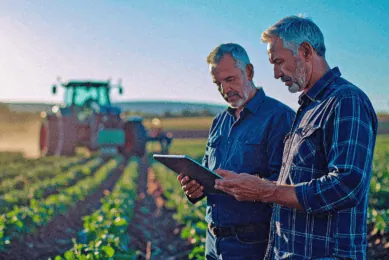New algorithm better predicts corn yield

A new study offers a promising approach to efficiently and accurately process precision ag data.
A team of researchers at University of Illinois developed methodology using deep learning to generate corn yield predictions. It incorporates information from different topographic variables, soil electroconductivity, as well as nitrogen and seed rate treatments the team applied throughout nine corn fields in the Midwestern United States, reports Science Daily.
Seeds and nitrogen fertiliser applied at varying rates across 226 fields
Nicolas Martin, assistant professor in the Department of Crop Sciences at Illinois and co-author of the study, and his team worked with 2017 and 2018 data from the Data Intensive Farm Management project, in which seeds and nitrogen fertiliser were applied at varying rates across 226 fields in the Midwest, Brazil, Argentina, and South Africa. On-ground measurements were paired with high-resolution satellite images from PlanetLab to predict yield.
Fields were digitally broken down into 5-meter (approximately 16-foot) squares. Data on soil, elevation, nitrogen application rate, and seed rate were fed into the computer for each square, with the goal of learning how the factors interact to predict yield in that square.
Text continues underneath image
Convolutional neural network
A type of machine learning or artificial intelligence known as a convolutional neural network (CNN) was used. According to Martin, convolutional neural networks are blind to existing patterns and instead take bits of data and learn the patterns that organise them. This CNN process, which predicted yield with high accuracy, was also compared to other machine learning algorithms and traditional statistical techniques.
Hidden patterns
“We don’t really know what is causing differences in yield responses to inputs across a field. Sometimes people have an idea that a certain spot should respond really strongly to nitrogen and it doesn‘t, or vice versa. The CNN can pick up on hidden patterns that may be causing a response,” Martin says. “And when we compared several methods, we found out that the CNN was working very well to explain yield variation.”
According to Martin his experiment merely grazes the tip of the iceberg in terms of CNN’s potential applications. “Eventually, we could use it to come up with optimum recommendations for a given combination of inputs and site constraints.”
Join 17,000+ subscribers
Subscribe to our newsletter to stay updated about all the need-to-know content in the agricultural sector, two times a week.



